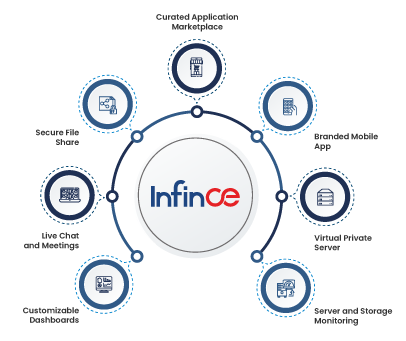4 Key Pillars to Ensure a Seamless BPM Experience for your Business
Small business entrepreneurs often think about how much to invest in digital tools that empower their business operations. The question arises mainly because they are unsure if their organization has attained sufficient scalability to bring on-board a digital enablement platform. Among these, one area where most small businesses cast doubt on digital transformation is business process management.
There is a notion that BPM and BPM software is meant only for large enterprises with well-defined processes and departmental policies. BPM is a practice even small businesses need to follow and cultivate as a cultural trait right from their startup days.
Now, the question is when should a small business start adopting BPM in its operations? The need for BPM is driven by the demand for efficiency which ultimately leads to better customer service. On this note, here are 4 key pillars you need to build in your company to ensure a seamless BPM experience:
1. Approval Matrix
In most small businesses, bottlenecks in efficiency occur due to a lack of sync in processes. Employees often wait at managerial desks seeking approvals for implementing changes or customer requirements. Managers, in turn, wait for approvals from senior leadership for various essential affairs.
Delays in submitting contracts and postponing commitments create a wrong impression on the customer. This can be eliminated by formulating an automated process workflow culture in the organization when metrics on items can determine its approval chances. A simple example could be classifying an approval matrix based on the size of the project. A smaller deal would require just a manger’s approval while bigger ones could require review and approval by higher authorities or leaders. Once this is defined, it will be easier to build a business process around it and ultimately automate it through a BPM software.
Related Reading: 5 Ways A Project Management Tool Can Help Your Business Grow
2. Building Awareness
As you grow from a startup into an established small business, there will be a rise in the number of employees as well as departments. For collective growth, it is important to ensure that all employees have access to the right information about the company and its offerings. Only then would they be able to handle internal business process improvement practices as well as become effective spokespersons for the company in front of customers.
Employees should be aware of how every activity in the organization leads to better customer experience. This can be achieved by having a well-defined organizational induction program for new joiners and a continuous learning initiative for on-boarded employees. This learning experience can be used to integrate employee thoughts with business objectives which will ultimately transform employees into torchbearers for BPM practices within their respective roles.
3. Encourage Autonomy
This is a continuation of the learning experience element we mentioned. There are processes within the organization that may have been brought into existence from a very complex background and scaled meaninglessly over time. To break it into simpler business models, it is important to ensure autonomous decision making by employees involved in these complex business operations.
Related Reading: 5 Ways To Improve Business Growth Through Employee Engagement
Employees should be given time to identify and map activities to processes with guidance gained from experts whenever needed. Hiring BPM specialists to disrupt and re-write such complex processes within one day is not advisable as it may throw employees into a tantrum and lead to highly frustrating experiences.
4. Drive Data Generation
This is one of the most important pillars that need to be established while adopting business process management in a small business. Every department or team in your organization needs to have a standard data generation policy. This generated data should be a base for determining the KPIs for tracking employee performance and growth, defining their intra-departmental or team dependencies, validating their customer satisfaction objectives and much more. Once everything is defined by data, it becomes easier to bring in automation between workflows, thus enabling better process management through BPM software.
Business process management is a transformational initiative that can bring about unparalleled operational efficiency in a small business. But as illustrated here, it needs a strong foundation and support from your entire organization for effective implementation. This is where a well-defined BPM capability built into your organization’s digital backend can be a game-changer. InfinCE, with its cloud-ready enterprise digital platform, can integrate seamlessly into your operations and enable a sound BPM strategy within your company. Get in touch with us to know more.







